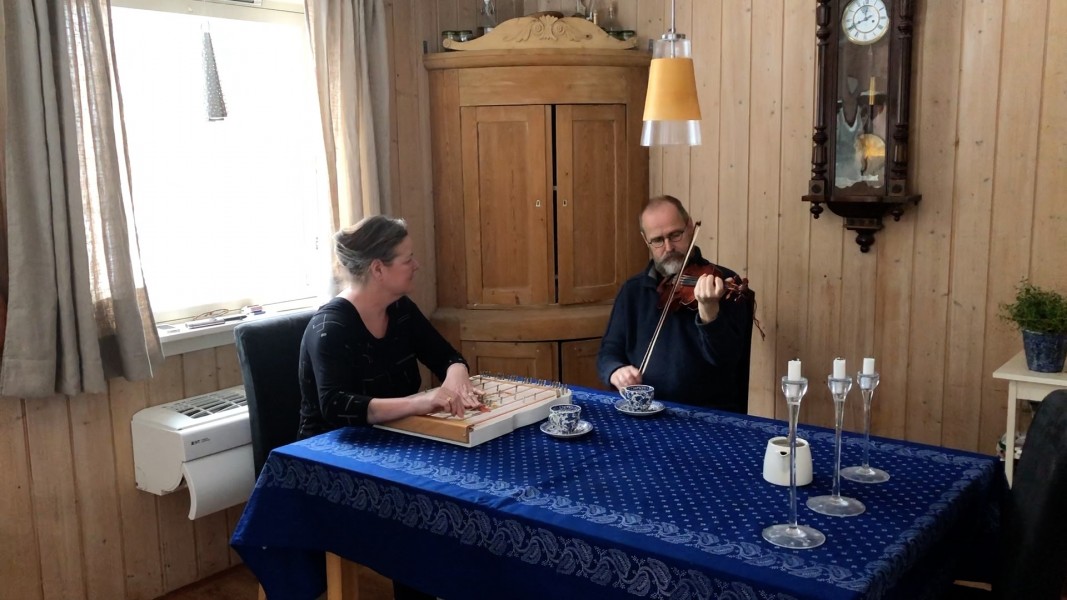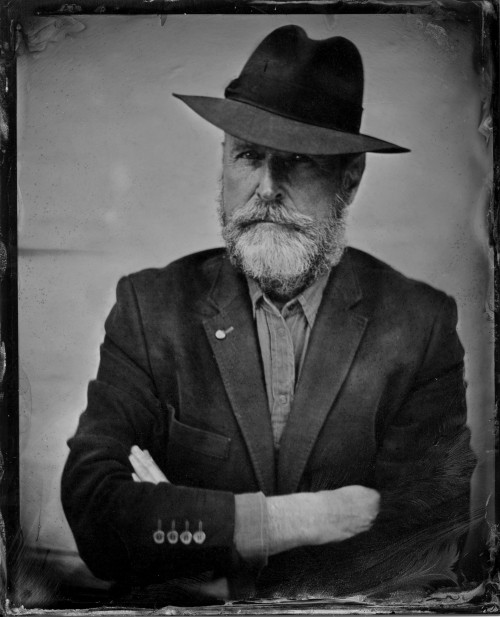Egeland spiller Fjeldstad

Egeland spiller Fjeldstad is Ånon Egeland’s homage to one of his most important teachers, Sigurd Fjeldstad (1903-1984) from Tvedestrand. In this recording, Ånon plays waltzes and airs, reinlenders and reels just the way Sigurd used to: with solo fiddle or simple chord zither accompaniment. In phrasing and intonation, Ånon’s style is very close to that of his teacher, although the ornamentation is unmistakably ”Egelandian”. This gives the production a highly personal touch – a distillation of countless cups of coffee, good stories, and, last but not least, masses of wonderful, unique tunes.
Hi-res audio files and booklet are available on BandCamp.
It is 2 January 1977 and I am finally making good on plans to visit the fiddle-player Sigurd Fjeldstad. He lives in a fairly remote spot, five kilometres north of the centre of Tvedestrand, southern Norway. So I’ve brought a local with me – my good friend, Jarle Hagane, who grew up in the area. We knock on the door and a slight man in his mid-70s opens up. This is the man we’ve come to meet. He’s probably a bit surprised to find two young strangers on his doorstep and asks hesitantly: “What can I do for you today?” When we answer that we’d hoped for a bit of music, he lights up and in no time we’re installed in the sitting room. It isn’t long before the fiddle comes out.
The music I heard then was a revelation: one unknown pearl after another, all played with authority in a thoroughly consistent style unlike anything I’d ever heard before. And when – after making coffee and preparing sandwiches for the unexpected guests – his wife Ella took out her chord zither, I had yet another landmark experience: traditional-style ensemble playing – a rare treat even in those days. A harmonious elderly couple, both feet firmly planted in this musical tradition, who radiated the joy of making music together.
Sigurd generously shared his music with anybody who was interested. After that first visit, I left for home with half a dozen new tunes, which I’d recorded. Keen as I was, I learnt them quickly and barely a month later I was back at Fjellstad. No sooner had I come in the door than I had to get my fiddle out to show Sigurd what I had learnt. We sit in the living room, while Ella makes coffee in the kitchen. When I’ve finished playing, some friendly commentary on the playing comes from the kitchen – Ella thinks it is Sigurd playing. Meanwhile, Sigurd is sitting on the firewood box, hands to his face, weeping tears of joy. To say I was also moved by the experience is a total understatement. I could hardly have hoped for a better endorsement!
After this trip, I visited Fjellstad as often as I could. The welcome was always just as hearty and I always left with new musical treasures. I learnt some useful lessons about music-making as a way of socialising — and socialising through music-making.
In hindsight, I see that my experiences at Fjellstad gave me a broader perspective on traditional musical that was extremely important as I gradually staked out my own path as both performer and teacher. I find it hard to imagine that I would have made the same career choice without the ballast I took with me from Fjellstad.
This album is recorded in gratitude for the warmth I met; for the cups of coffee, sandwiches, cakes and – not least – the unique musical legacy I inherited.

Ånon Egeland
Ånon Egeland has got his tradition from legendary fiddlers of Agder, and is best known as a promoter of this musical heritage. Ånon has a very personal style of play clearly rooted in tradition, and he has a large repertoire of rare tunes. Since he debuted on LP in 1977, he has participated in a dozen albums with the best tradition musicians in Scandinavia, he has spread his music in 22 countries on four continents. He has worked full time as a teacher in traditional music since 1988, and at the Institute of Folk Culture at Rauland, University College Southeast Norway, since 1999.



